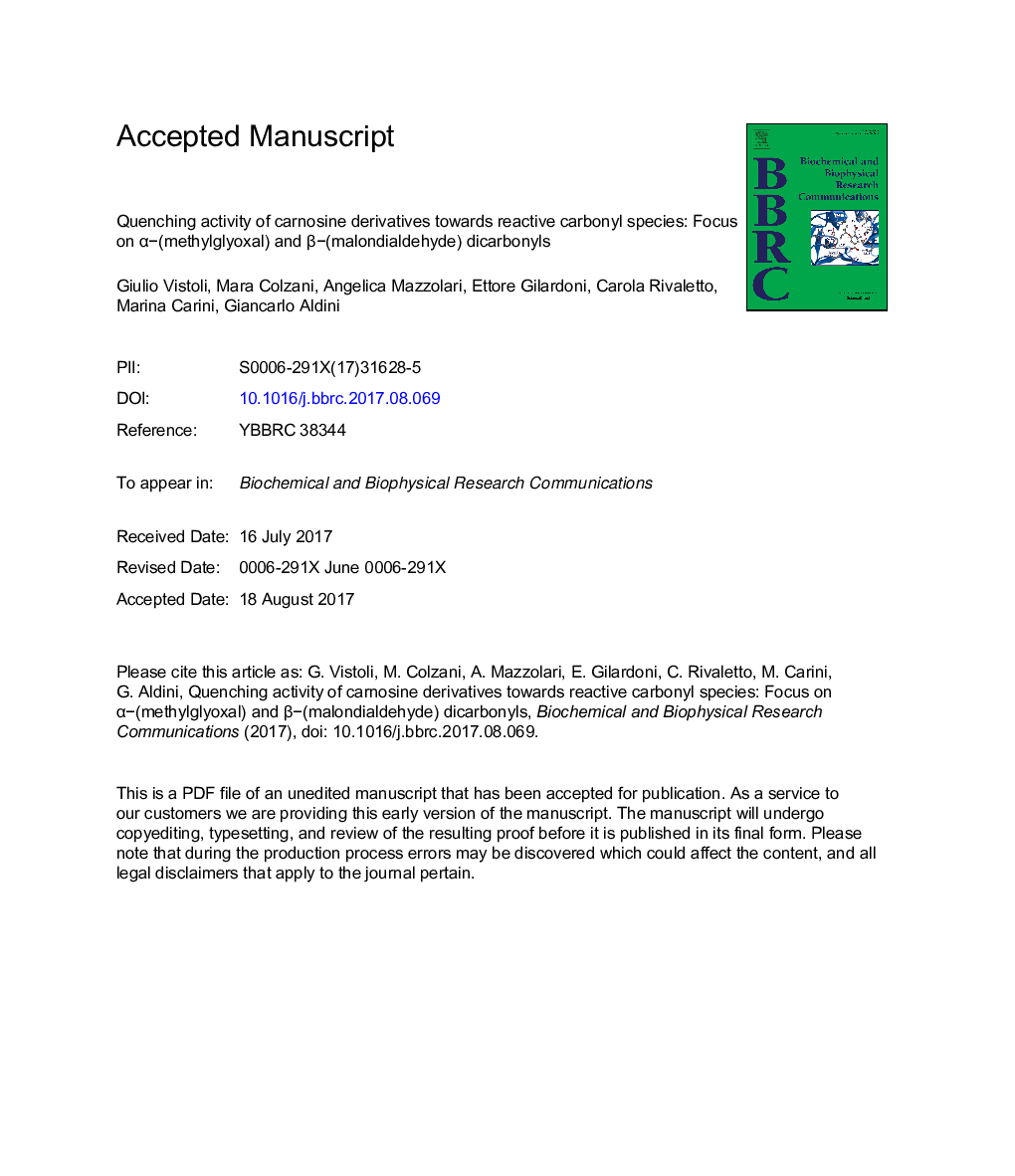| Article ID | Journal | Published Year | Pages | File Type |
|---|---|---|---|---|
| 5504909 | Biochemical and Biophysical Research Communications | 2017 | 18 Pages |
Abstract
The study combines HPLC-based with MS-based competitive analyses to evaluate the quenching activity of a set of carnosine derivatives towards methylglyoxal (MGO) and malondialdehyde (MDA) chosen as representative of αâ and βâdicarbonyls, respectively. The obtained results underline that these derivatives are moderately reactive towards MDA with which they form the corresponding N-propenal adduct via Michael addition. In contrast they proved a rather poor quenching activity towards MGO with which they can condense to give MOLD-like adducts through a concerted mechanism involving more quenchers molecules. Even though both quenching mechanisms involve the amino group in its neutral form, in silico studies revealed that the reported reactivity values depend on different stereo-electronic parameters which are reflected in the different observed quenching mechanism. Finally, the MGO quenching reactivity and the unselective (and unwanted) pyridoxal quenching are found to be influenced by the same parameters thus rationalizing the known difficulty in the design of potent and selective quenchers towards β-dicarbonyls.
Related Topics
Life Sciences
Biochemistry, Genetics and Molecular Biology
Biochemistry
Authors
Giulio Vistoli, Mara Colzani, Angelica Mazzolari, Ettore Gilardoni, Carola Rivaletto, Marina Carini, Giancarlo Aldini,
